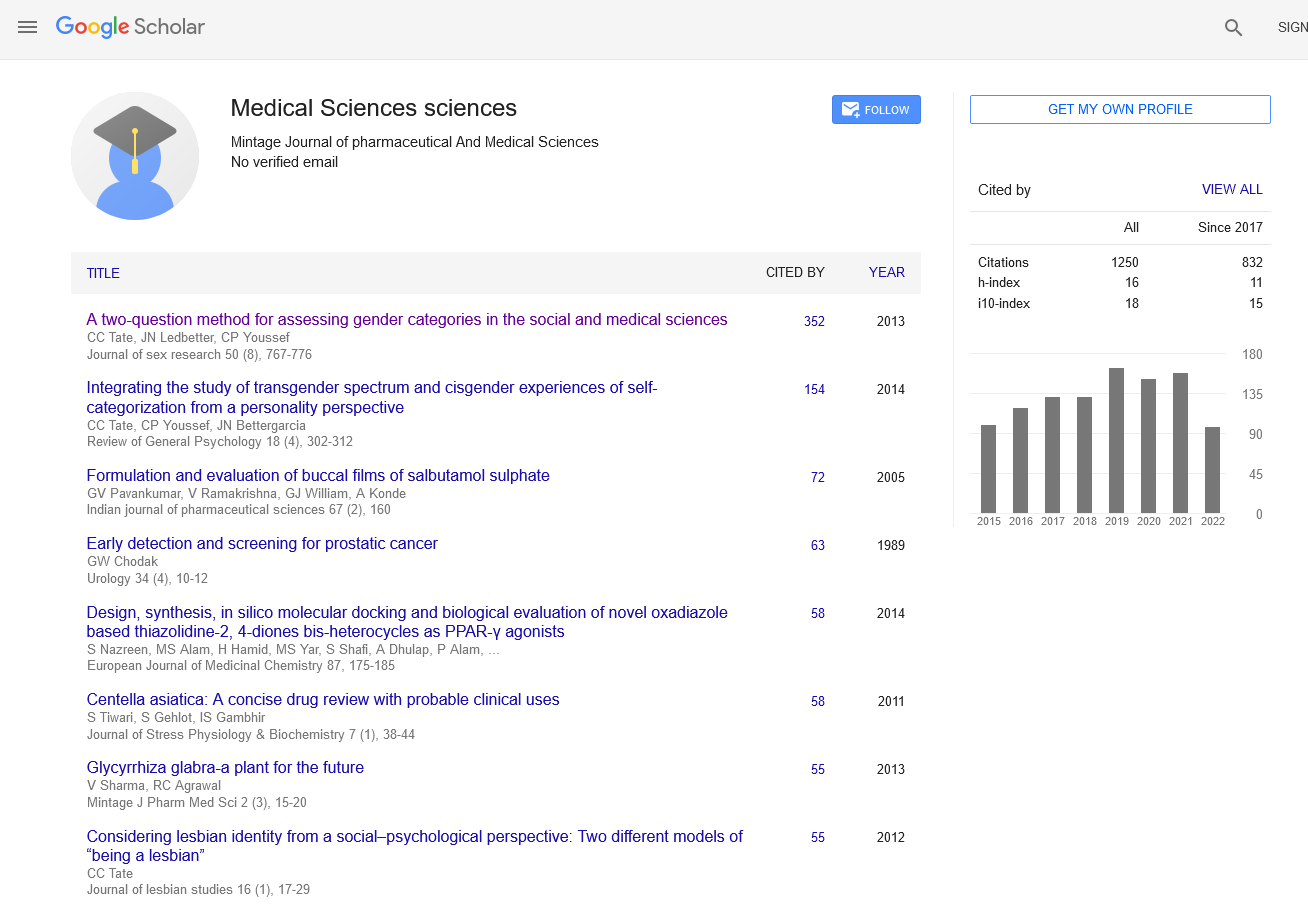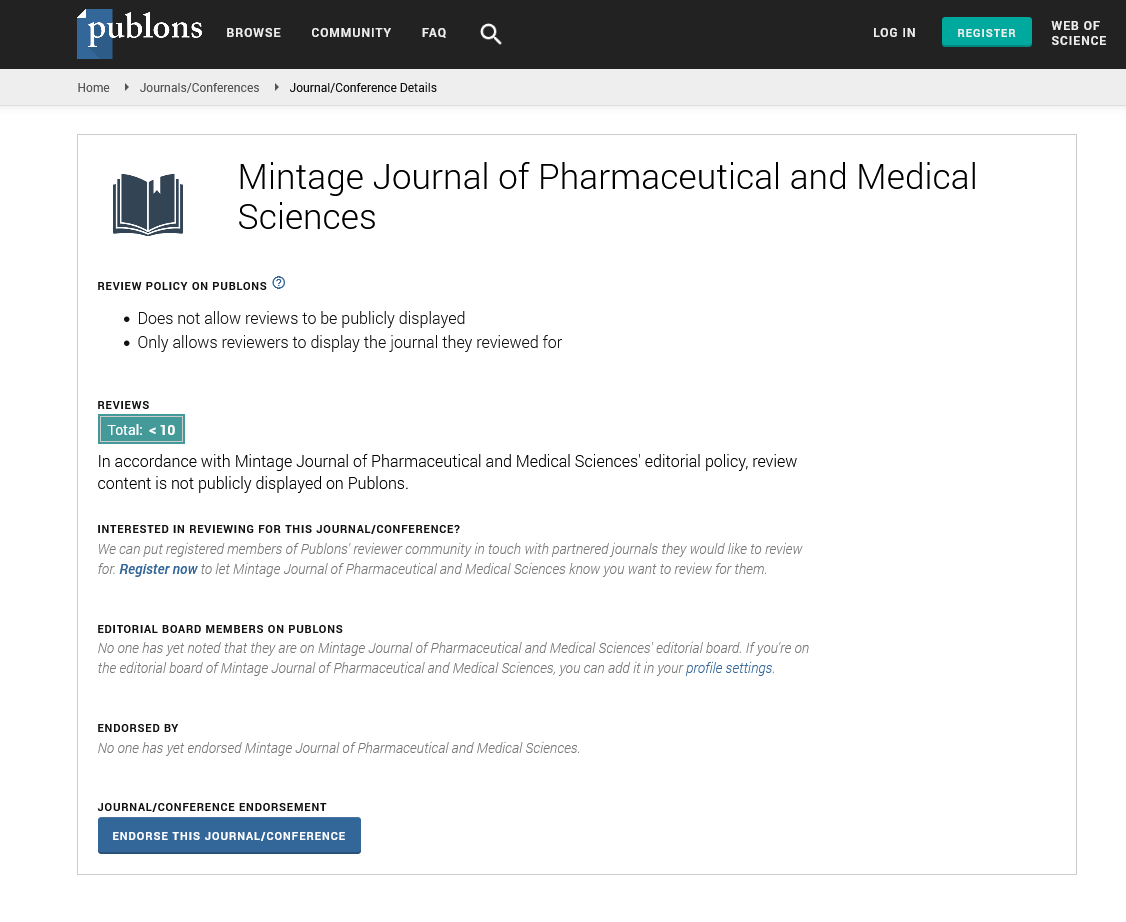Sustained Release Medications: Innovations in Prolonged Therapeutic Action
Opinion - (2024) Volume 13, Issue 3
Introduction
Sustained release medications, often referred to as controlled or extendedrelease formulations, represent a significant advancement in pharmaceutical science. These medications are designed to release their active ingredients slowly and continuously over an extended period, providing long-lasting therapeutic effects. This innovative approach to drug delivery aims to maintain consistent drug levels in the bloodstream, improving treatment efficacy and patient compliance while minimizing side effects.
Description
In conventional medication, drugs are typically released and absorbed into the bloodstream rapidly after ingestion, resulting in an initial peak concentration, followed by a gradual decline. This rapid release can cause fluctuations in drug levels, which may lead to periods of insufficient therapeutic effect or, conversely, to toxic effects when drug concentrations spike too high. To counteract these fluctuations, patients are often required to take multiple doses throughout the day, which can be inconvenient and reduce adherence to the prescribed regimen. Sustained release formulations address these challenges by ensuring that the drug is released at a controlled rate, providing a steady concentration of the active ingredient in the body over an extended period. This helps maintain the therapeutic effect without the need for frequent dosing. For example, a sustained release medication might be designed to release its active ingredient over 12 or 24 hours, allowing for once-daily dosing instead of multiple administrations. The development of sustained release medications relies on sophisticated drug delivery technologies. One common approach is the use of polymers, which are materials that control the rate at which the drug is released. The drug may be embedded in a matrix of polymer material, and as the polymer slowly degrades or dissolves in the body, the drug is gradually released. Alternatively, the medication can be coated with layers of polymers that dissolve at different rates, allowing the drug to be released over a prolonged period. These systems are carefully engineered to ensure that the drug is released in a controlled manner, based on factors such as the polymer’s properties, the drug’s solubility, and the body’s physiological conditions. Sustained release medications offer numerous benefits to patients and healthcare providers. One of the most significant advantages is improved patient adherence. For chronic conditions that require long-term medication, such as diabetes, hypertension, or pain management, sustained release formulations can simplify the dosing regimen, making it easier for patients to follow their treatment plan. Fewer doses per day reduce the likelihood of missed doses, which is a common problem with conventional medications that need to be taken multiple times a day. Another advantage of sustained release medications is the reduction in side effects. When a drug is released gradually, it can help to avoid the peak concentrations that can lead to side effects, such as nausea, dizziness, or toxicity. By maintaining a more consistent drug level in the body, patients experience fewer adverse reactions, making the treatment more tolerable. Sustained release formulations also offer benefits in terms of drug efficacy. In some cases, the therapeutic effect of a drug is only achieved when its concentration in the blood remains within a narrow range. With conventional formulations, drug levels may fluctuate outside of this range, leading to periods where the drug is less effective or causing harmful side effects when concentrations are too high. Sustained release medications help to maintain drug levels within the desired therapeutic window for longer periods, leading to better disease control and outcomes. Despite the clear advantages, sustained release medications are not suitable for all drugs. Certain drugs are absorbed too slowly or too erratically for sustained release formulations to be effective. Additionally, some medications require immediate action, which sustained release systems cannot provide. For these reasons, pharmaceutical scientists must carefully consider the properties of the drug and the desired therapeutic outcome when designing sustained release formulations.
Conclusion
In conclusion, sustained release medications represent a remarkable innovation in pharmaceutical science, offering significant benefits in terms of patient compliance, reduced side effects, and improved therapeutic outcomes. By providing a controlled, steady release of drugs over time, these formulations are transforming the way chronic conditions are treated and improving the quality of life for patients worldwide. As technology continues to advance, the future of sustained release medications holds even greater promise for the development of more effective and patient-friendly treatments.
Author Info
Omerovic Kenett*Received: 02-Sep-2024, Manuscript No. mjpms-24-147869; , Pre QC No. mjpms-24-147869 (PQ); Editor assigned: 04-Sep-2024, Pre QC No. mjpms-24-147869 (PQ); Reviewed: 18-Sep-2024, QC No. mjpms-24-147869; Revised: 23-Sep-2024, Manuscript No. mjpms-24-147869 (R); Published: 30-Sep-2024, DOI: 10.4303/2320-3315/236027
Copyright: © This article is an open access article distributed under the terms and conditions of the Creative Commons Attribution (CC-BY) license (http://creativecommons.org/licenses/by/4.0/)

ISSN: 2320-3315
ICV :81.58

